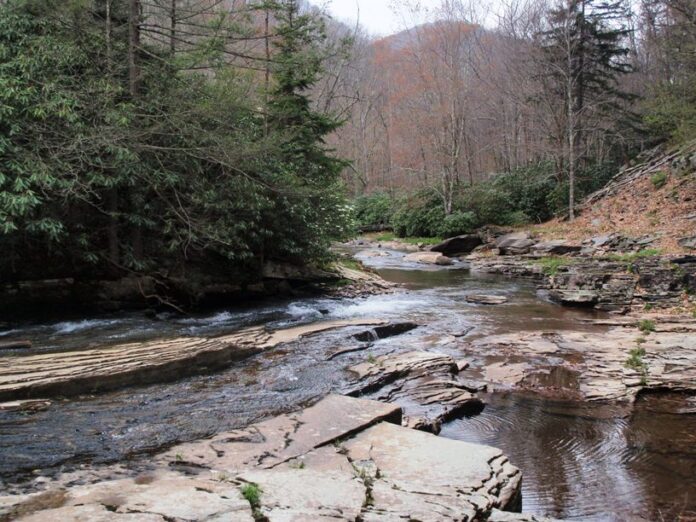
New plan will not allow leasing of any additional lands for energy extraction, reducing risks to coldwater streams
The new George Washington National Forest management plan offers a reasonable approach to shale gas development on the 1.1 million acre forest in Virginia and West Virginia, according to Trout Unlimited, the nation’s leading trout and salmon conservation group.
The new plan, which was released today, will not allow the leasing of additional land for energy extraction, minimizing potential risks to the hundreds of miles of forest streams holding wild and native trout.
The plan allows for energy development on 10,000 acres on which oil and gas companies already hold leases. An additional 167,000 acres where companies hold underground mineral rights will also remain open. That equates to 16 percent of the forest.
“Trout Unlimited applauds the Forest Service for promoting responsible energy development while protecting critical trout habitat,” said Elizabeth Maclin, the organization’s vice president of eastern conservation. “We agree that oil and gas development should be done the right way, but not in the wrong place.”
Among the places the plan makes off limits for leasing is the Laurel Fork, a brook trout stronghold and one of the most pristine watersheds in the forest.
TU was an active participant in the forest planning process, and encouraged its members to provide input.
The organization is currently highlighting the George Washington and Jefferson national forests in its “10 Special Places” campaign (tu.org/special-places), which focuses on public lands in the Central Appalachian region where shale gas drilling and related infrastructure could pose risks to fishing and hunting resources. Combined, the forests contain 60 percent of Virginia’s wild brook trout streams, and those critical resources must be afforded the utmost protection from energy extraction activities and related infrastructure.
Maclin praised several other aspects of the plan that could benefit the forest’s coldwater resources, and sportsmen and women who fish and hunt in the forest.
For example, the plan provides for increased protection of rivers and streams by expanding the width of riparian corridors. It also proposes several actions to provide for watershed health in the face of a changing climate, including improving stream connectivity by replacing standard culverts, improving stream crossings and bridges to better withstand major runoff events, decommissioning roads in areas where they are not needed or causing unacceptable resource damage, and controlling sources of erosion and stream sedimentation.
Trout Unlimited is the nation’s largest coldwater conservation organization, with 155,000 members, including more than 8,000 in Virginia, dedicated to conserving, protecting, and restoring North America’s trout and salmon fisheries and their watersheds. Learn more at tu.org.


